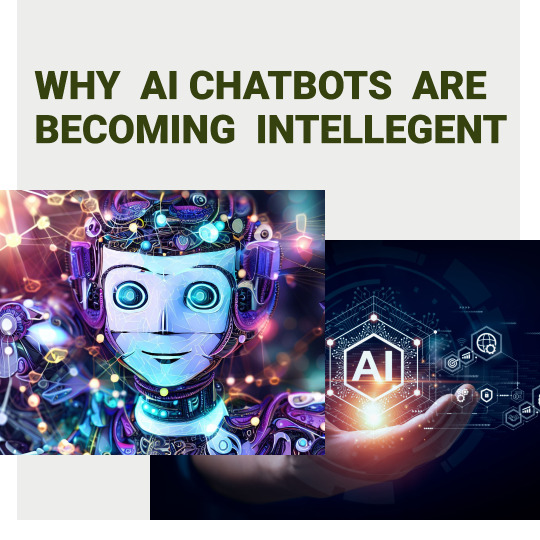#SEO for AI Search Engines
Explore tagged Tumblr posts
Text
Rank on ChatGPT Search Engine: A Complete Guide to ChatGPT SEO

Why is ChatGPT making waves in the search engine world, and what does it mean for your content? While traditional SEO strategies still hold value, the rise of AI-powered search engines like ChatGPT demands a new approach. It’s no longer just about keyword stuffing or backlinking; it’s about optimizing content for AI comprehension and user intent.
As more and more people rely on AI to find information, the stakes are higher than ever. To ensure your content stands out in this new landscape, you need to understand how AI “thinks” and how it processes information.....Continue
#seo#wordpress#content marketing#marketing#artificial intelligence#AI Search Engine Ranking#AI Search Engine SEO#ChatGPT Search Optimization#ChatGPT SEO Guide#ChatGPT SEO Tips#How to Rank on ChatGPT#Rank on ChatGPT Search Engine#SEO for AI Search Engines
0 notes
Text
Do ya'll remember when you could go to that "advanced search" page on google? The page that looked like a library's search engine?
Did you know it still exists??? Cus I sure didn't! It's like it's its (its it's its for good measure) own webpage now, but she lives! You just have to search "google advanced search" and its the first result
Completely worthless info to me personally since I use duckduckgo or ecosia which you should too btw, but hey! Maybe that knowledge will help someone out there since AI SEO blah blah has razed the internet to the ground
#google#advanced search#TIL#today i relearned#SEO#fuck google#but this is useful#anti ai#search engine#duckduckgo#ecosia#seriously USE THOSE TWO INSTEAD#this is an order
38 notes
·
View notes
Text


Image Manipulation
#digitalmarketing#ai image#image manipulation#graphics#seo#socialmediamarketing#search engine optimization#web graphics#graphics design
3 notes
·
View notes
Text
ADVANCED NEW SEO2
Beyond the Basics: Unconventional SEO Tactics for the Bold
While traditional SEO remains vital, pushing boundaries requires exploring the unconventional. These unique and experimental techniques can give you a competitive edge:
Content Mastery:
Semantic Content Weaving: Go beyond simple keyword placement. Interlink related concepts and entities throughout your website, creating a rich semantic web that search engines can easily understand. Think of it as building an internal Wikipedia for your niche.
Interactive Content Experiences: Engage users with quizzes, polls, interactive maps, and personalized calculators. This boosts dwell time and encourages social sharing, indirectly signaling value to search engines.
AI-Powered Content Augmentation: Use AI not just for content generation, but to analyze existing content and suggest improvements. Identify areas to expand, rephrase for clarity, or add visuals for greater impact.
Technical Prowess:
Predictive Pre-rendering: Anticipate user intent and pre-render pages likely to be accessed next. This reduces load times and creates a seamless browsing experience, improving user signals and potentially boosting rankings.
JavaScript SEO for Dynamic Content: Master JavaScript SEO to ensure search engines can crawl and index dynamic content. This is crucial for websites heavily reliant on JavaScript frameworks.
Advanced Schema Markup Strategies: Go beyond basic schema. Implement event schema for upcoming webinars or product launch schema for new releases. This can lead to rich results and increased visibility in search.

Link Acquisition Reimagined:
Reverse Image Search Link Building: Find websites using your images without attribution. Reach out and request image credit with a link back to your site.
Community-Driven Link Earning: Actively participate in niche online communities. Provide valuable insights and naturally earn links through your contributions.
Content Syndication with a Twist: Syndicate your content to less common platforms like industry-specific forums or niche social networks. This can tap into new audiences and generate unexpected backlinks.
User Experience (UX) Elevated:
Micro-Interactions for Engagement: Implement subtle animations and interactive elements to delight users and encourage interaction. This can improve time on page and reduce bounce rate.
Personalized Content Recommendations: Use AI to suggest relevant content to users based on their browsing history. This enhances user experience and encourages deeper exploration of your website.
Accessibility-First SEO: Prioritize website accessibility for users with disabilities. This not only improves user experience for everyone but also aligns with Google's focus on inclusivity.
Caveats and Considerations:
Ethical Boundaries: Always prioritize white-hat SEO practices. Avoid manipulative tactics that violate search engine guidelines.
Continuous Learning: The SEO landscape is ever-evolving. Stay updated on the latest trends and algorithm changes.
Data-Driven Decisions: Track your experiments, analyze the results, and refine your strategies based on data-driven insights.
By embracing these unique and experimental SEO techniques, you can unlock new levels of organic visibility and establish your website as a true leader in your niche.

PREDRAG PETROVIC, SEO STRATEGIST
#SEO#SEO2#ADVANCED SEO#advanced digital marketing course#SEO EXPERT#SEARCH ENGINE OPTIMIZATION#AI MARKETING#Accessibility-First SEO#SEO STRATEGIST#PREDRAG#PREDRAG PETROVIC
4 notes
·
View notes
Text
Cybersecurity vs. SaaS Marketing: Why Selling Security Is a Whole Different Game
Selling cybersecurity isn't the same as selling SaaS. This post explores the unique challenges and strategies involved in marketing security solutions. Learn why trust, risk aversion, and compliance play a crucial role in cybersecurity sales, and how to tailor your approach for success.

In the world of B2B tech, marketing cybersecurity solutions is like playing chess while everyone else is playing checkers. It's more complex, higher stakes, and requires a completely different strategy. This article dives into why marketing cybersecurity products is so different from selling your average SaaS solution, and why it matters for your business.
Think about it: When you're marketing a typical SaaS product, you're selling efficiency, productivity, or cost savings. But with cybersecurity? You're selling peace of mind in a digital world full of threats. It's not just about making life easier—it's about keeping businesses safe from invisible dangers.
Here's what we'll uncover:
Why cybersecurity products are trickier to explain (and sell)
How building trust is your secret weapon in security marketing
The constant race against new threats (and how it affects your marketing)
Why your customers might not know they need you (until it's too late)
Navigating the maze of regulations and compliance
Whether you're a marketer looking to level up your skills, a business owner trying to protect your digital assets, or just curious about how the world of cybersecurity ticks, this article will shed light on why marketing in this field is a unique challenge—and an exciting opportunity.
The Need for Specialized Marketing Skills in Cybersecurity
Before we dive into the specific differences, it's crucial to understand why cybersecurity marketing requires a specialized skill set:
Technical Proficiency: Cybersecurity marketers need a deep understanding of complex technical concepts to effectively communicate product value.
Risk Communication: Balancing the need to convey urgency without resorting to fear-mongering requires a nuanced approach.
Regulatory Knowledge: Familiarity with various compliance standards and regulations is essential for credible marketing in this space.
Rapid Adaptation: The ever-evolving threat landscape demands marketers who can quickly pivot strategies and messaging.
Trust Building: In a field where skepticism is high, marketers must excel at building and maintaining trust through every interaction.
Now, let's explore the five critical areas that make cybersecurity marketing a different beast from its SaaS counterparts, and learn how savvy marketers are rising to meet these challenges head-on.
1. Complexity of the Product
Cybersecurity Marketing
Cybersecurity solutions often involve intricate technologies and specialized knowledge. The products are designed to protect against sophisticated threats and vulnerabilities, which can be difficult for non-experts to fully grasp. As a result, cybersecurity marketers face the challenge of:
Simplifying complex concepts without losing their technical essence
Educating potential customers on the importance and functionality of various security measures
Balancing technical accuracy with accessibility to appeal to both IT professionals and business decision-makers
Specialized Skill: The ability to translate highly technical concepts into clear, compelling narratives that resonate with both technical and non-technical audiences.
Traditional SaaS Marketing
While SaaS products can also be complex, they often focus on solving more straightforward business problems. Marketers of traditional SaaS products typically:
Highlight user-friendly interfaces and intuitive functionality
Focus on immediate business benefits and ROI
Use less technical jargon in their marketing materials
2. Emphasis on Trust and Credibility
Cybersecurity Marketing
Trust is paramount in cybersecurity. Organizations are essentially entrusting their digital assets and sensitive information to the cybersecurity solution provider. To build this trust, cybersecurity marketers must:
Demonstrate deep expertise in the field
Showcase a proven track record of protecting against threats
Utilize case studies and customer testimonials extensively
Produce thought leadership content to establish authority
Highlight certifications, compliance, and industry recognition
Specialized Skill: The ability to build and maintain trust through every marketing touchpoint, from content creation to customer interactions.
Traditional SaaS Marketing
While trust is important for all SaaS products, the stakes are generally lower. Traditional SaaS marketers focus on:
User reviews and ratings
Ease of use and customer support
Integration capabilities with other tools
Cost-effectiveness and scalability
3. Rapidly Evolving Threat Landscape
Cybersecurity Marketing
The cybersecurity field is in a constant state of flux, with new threats emerging regularly. This dynamic environment requires cybersecurity marketers to:
Stay informed about the latest threats and trends
Quickly adapt marketing messages to address emerging challenges
Demonstrate how their solutions evolve to counter new risks
Educate the market about new types of threats and vulnerabilities
Position their products as forward-thinking and proactive
Specialized Skill: The ability to rapidly assimilate new information about emerging threats and translate it into compelling marketing messages and strategies.
Traditional SaaS Marketing
While innovation is important in SaaS, the pace of change is typically slower. SaaS marketers often focus on:
Long-term value proposition and stability
Gradual feature improvements and updates
Industry trends rather than immediate threats
4. Target Audience's Risk Awareness
Cybersecurity Marketing
Many organizations take a reactive approach to cybersecurity, only prioritizing it after experiencing a threat. This creates unique challenges and opportunities for marketers:
Educating potential clients about the importance of proactive measures
Using fear-based marketing carefully to highlight risks without being alarmist
Demonstrating the cost of inaction through real-world examples
Targeting both technical (CISOs, IT managers) and non-technical (CEOs, CFOs) decision-makers
Specialized Skill: The ability to effectively communicate risk and urgency without resorting to fear-mongering, while also tailoring messages to different stakeholders within an organization.
SaaS Marketing
Traditional SaaS products often address known pain points or inefficiencies. Marketers typically focus on:
Highlighting productivity gains and cost savings
Showcasing how the product solves existing problems
Appealing to a more defined set of decision-makers within an organization
5. Regulatory and Compliance Considerations
Cybersecurity Marketing
Cybersecurity solutions must often adhere to specific regulatory standards, adding another layer of complexity to marketing efforts:
Communicating compliance capabilities effectively
Addressing concerns related to data protection laws (e.g., GDPR, CCPA)
Highlighting adherence to industry-specific regulations (e.g., HIPAA for healthcare)
Demonstrating how the solution helps clients meet their own compliance requirements
Specialized Skill: A deep understanding of various regulatory frameworks and the ability to articulate how cybersecurity solutions address compliance requirements.
General SaaS Marketing
While some SaaS products may need to address compliance, it's typically not as central to the marketing message:
Focus on general data security and privacy features
Highlight any relevant certifications (e.g., SOC 2)
Address compliance as a feature rather than a core selling point
The Learning Curve for B2B SaaS Marketers
For B2B SaaS marketers transitioning into cybersecurity, the learning curve can be steep and time-consuming. Here's why:
Technical Knowledge Acquisition: Understanding the intricacies of cybersecurity technology, threat landscapes, and defense mechanisms requires significant study and often hands-on experience.
Regulatory Comprehension: Grasping the nuances of various compliance standards and their implications for different industries takes time and continuous learning.
Risk Communication Skills: Developing the ability to effectively communicate about risks without causing panic or disengagement is a delicate skill that takes practice to master.
Trust-Building Expertise: Learning how to establish and maintain trust in a highly skeptical market requires time to build credibility and refine communication strategies.
Rapid Adaptation Abilities: Cultivating the agility to quickly understand and respond to new threats and market changes is an ongoing process that improves with experience.
Cross-Functional Collaboration: Developing the ability to work effectively with technical teams, compliance officers, and C-suite executives requires time to build relationships and understand diverse perspectives.
Industry-Specific Knowledge: Each industry (e.g., healthcare, finance, government) has unique cybersecurity needs and regulations, requiring marketers to develop sector-specific expertise.
Typically, it can take 2-3 years for a B2B SaaS marketer to become proficient in cybersecurity marketing, and 3-5 years to be considered an expert in the field. This timeline can vary based on the individual's background, the complexity of the cybersecurity solutions they're marketing, and the resources available for professional development.
Conclusion
Marketing cybersecurity solutions requires a unique approach that goes beyond traditional SaaS marketing strategies. The complexity of the products, the critical need for trust and credibility, the rapidly changing threat landscape, the varying levels of risk awareness among potential clients, and the intricate regulatory environment all contribute to making cybersecurity marketing a distinct challenge.
Successful cybersecurity marketers must balance technical expertise with clear communication, educate their audience while building trust, and stay agile in response to new threats and regulations. By understanding these key differences and investing in specialized skills, marketers can create more effective strategies that resonate with the specific needs and concerns of the cybersecurity market.
For B2B SaaS marketers looking to transition into this field, patience and dedication are key. The journey to becoming a proficient cybersecurity marketer is demanding but rewarding, offering the opportunity to play a crucial role in protecting organizations and individuals in our increasingly digital world.
Visit for more info: https://gracker.ai/
#seo services#seo strategy#content strategy#search engine optimisation#seo marketing#blog strategy#cybersecurity#content creation#ai generated#content marketing
3 notes
·
View notes
Text
Create Impactful Digital Experiences with Augmented Reality Development Services
At Atcuality, we believe in the power of augmented reality to transform how users interact with brands. Our augmented reality development services provide businesses with innovative solutions that captivate audiences by blending digital and real-world elements. This immersive technology enables users to visualize products, explore environments, and experience services in a whole new way. Our experienced team of developers and designers work collaboratively with clients to deliver custom AR applications that align with specific business goals. By adopting AR, businesses can enhance customer engagement, increase interaction, and differentiate themselves in a crowded market. With Atcuality’s augmented reality development services, you can create digital experiences that leave a lasting impression, building stronger connections with your audience. Discover how AR can benefit your brand and redefine customer interaction with Atcuality's expertise at your service.
#iot applications#artificial intelligence#technology#digital marketing#seo marketing#seo#seo services#emailmarketing#search engine optimization#google ads#socialmediamarketing#augmented reality#augmented human c4 621#augmented and virtual reality market#blockchain#ai powered application#amazon web services#mobile app development company#mobile app developers#mobile application development#app developers#app development company#azure cloud services#cash collection application#cloud security services#iot app development services#task management solution
3 notes
·
View notes
Text
Your search for game-changing marketing ends here.
At Addzet, we create and implement AI-powered strategies that deliver real conversions.
Ready to stand out online?
Think Digital, Think Addzet!
✆ +91-9777181234 🌐 www.addzet.com
#addzet#Adelina#online marketing#digital marketing#social media marketing#advertising#digital#seo company#marketing#branding#startup#business#smallbusiness#search engine optimization#seo#seo services#digital marketing services#digital transformation#ai#artificial intelligence#best digital marketing service#best digital marketing agency#best digital marketing services#BEST DIGITAL MARKETING COMPANY ODISHA
2 notes
·
View notes
Text
FUTURE OF YANDEX SEARCH ENGINE?
PREDICTIONS FOR 2025 - SEO / AI and MACHINE LEARNING
Predicting the future of Yandex in 2025 is complex, and there is no single definitive answer. However, here are some potential developments based on current trends and expert analyses:
Potential Positive Developments:
Continued Growth in Russia and CIS: Yandex is likely to maintain its dominant position in Russia and other CIS countries due to its strong brand recognition, localized content, and understanding of the market.
Expansion into New Markets: Yandex may further expand its presence in other emerging markets, leveraging its technology and experience to compete with established players.
AI and Machine Learning Advancements: Yandex has been investing heavily in AI and machine learning, which could lead to significant improvements in search accuracy, personalization, and user experience.
Diversification of Services: Yandex's diverse portfolio of services (e-commerce, ride-hailing, cloud computing, etc.) could provide a buffer against fluctuations in the search market and contribute to overall growth.
Potential Challenges:
Increased Competition: Global players like Google and emerging AI-powered search engines could intensify competition, especially in international markets.
Regulatory Hurdles: The regulatory environment in Russia and other markets could become more restrictive, impacting Yandex's operations and growth potential.
Economic Volatility: Economic downturns in key markets could negatively affect advertising revenues, a major source of income for Yandex.
Overall Prediction:
Yandex is likely to remain a major player in the search engine market in 2025, particularly in Russia and the CIS. Its success will depend on its ability to navigate challenges, innovate, and capitalize on opportunities in a rapidly evolving landscape.
It's important to remember that these are just predictions, and the actual future of Yandex could be influenced by unforeseen events and developments.
Additional Resources:
For more information and diverse perspectives, you can search for analyst reports, news articles, and expert opinions on the future of Yandex.
It is also helpful to follow Yandex's official announcements and financial reports to stay updated on their progress and strategies.
Remember: The future is uncertain, and any predictions should be considered with caution.
SEOSHNIK: PREDRAG
#seo#seoexpert#answer engine optimization#seo yandex#yandex#yandex seo expert#realestate#design#ai yandex#yandex engine#yandex search engine#e-commerce#ride-hailing#cloud computing#SEOSHNIK#2025#optimized for 2025#2025 predictions#SEO PREDICTIONS#RECOMMENDED SEO#SEO RECOMENDED
2 notes
·
View notes
Text









Are you finding it challenging to link your content strategy with SEO goals? Check out our latest post for straightforward tips on how to bridge that gap. Learn practical steps to improve your strategy and boost your online impact. 🚀
#digital marketing#tumbler#openai#seo services#google#content strategy#marketing tips#content creation#search engine optimization#ai
2 notes
·
View notes
Text
Impact Of AI on SEO and Future in 2024
Impact of Artificial intelligence (AI) is transforming the world of digital marketing. AI refers to the ability of machines to perform tasks that normally require human intelligence, such as understanding natural language, recognizing images, and learning from data.

AI technologies, such as machine learning and natural language processing, are increasingly being used to optimize various aspects of search engine optimization, which is the process of improving the visibility and relevance of websites on search engines.
2 notes
·
View notes
Text

SEO (Arama Motoru Optimizasyonu) stratejileri, Google’ın algoritma güncellemeleriyle sürekli evrim geçirmektedir. BERT güncellemesi, içerik üreticilerinin ve SEO uzmanlarının, anahtar kelime yoğunluğundan ziyade, kullanıcıların gerçek ihtiyaçlarına odaklanan içerikler oluşturmasını teşvik etmiştir. Bu değişiklik, daha doğal dil kullanımını ve zengin bilgi sunumunu ön plana çıkarmıştır.
Yazının devamı: https://www.gezginajans.com/google-bert-algoritmasi-nedir/
2 notes
·
View notes
Text
Introducing SnappyRanker Automated SEO Software
Are you tired of struggling to rank your videos and websites on Google and YouTube?
Imagine effortlessly reaching the top of both Google and YouTube without breaking a virtual sweat!
With SnappyRanker automated SEO software, you'll unlock the secrets to skyrocketing your online presence.
Whether you're a content creator, business owner, or aspiring influencer, this powerful tool will ensure your videos and websites rank higher than ever before.
Say goodbye to endless keyword research and confusing optimization strategies.
SnappyRanker does all the heavy lifting for you, delivering outstanding results with precision and speed.
Ready to take your SEO game to the next level?
Join the SnappyRanker revolution today and experience the game-changing power of our A.I. technology.
Don't miss out on the opportunity to leave your competition in the dust!
AFFILIATE DISCLOSURE:
This post contains affiliate links, and we may earn a commission from qualifying purchases.
#small business#advertising#marketing#ai#entrepreneur#seo services#search engine optimization#keyword research#keyword ranking
3 notes
·
View notes
Text
Reason Why AI Chatbots Are Becoming More Intelligent?

Introduction:
AI chatbots have come a long way from their early days of producing responses. With the advancement in technology, these intelligent conversation partners have transformed various industries. This article scrabbles into the reasons why AI chatbots are becoming more intelligent and explores the key components behind their evolution.
Understanding AI Chatbots:
Defining AI chatbots and their key components
AI chatbots are computer programs that are designed to simulate conversations with human users. They rely on natural language processing (NLP), machine learning, and other AI techniques to understand user queries and provide appropriate responses. The key components of AI chatbots include a language understanding module, a dialog management system, and a language generation component.
Types of AI chatbots and their functionalities
There are different types of AI chatbots, each serving a specific purpose. Rule-based chatbots follow a predefined set of rules and provide answers based on the programmed responses. On the other hand, machine-learning chatbots employ algorithms that enable them to learn from users' interactions and improve their responses over time.
How AI chatbots learn and adapt
AI chatbots learn and adapt through a process known as training. Initially, the chatbot is provided with a dataset of conversations and relevant information. Through machine learning algorithms, it analyzes this data and creates patterns to respond more intelligently. As users interact with the chatbot, it further improves its understanding and adaptation capabilities.
The Role of Natural Language Processing (NLP):
Exploring the significance of NLP in AI chatbots' intelligence
NLP plays a crucial role in enhancing the intelligence of AI chatbots. It enables them to understand and interpret human language, including complex sentences, slang, and context-dependent meanings. By leveraging NLP techniques, chatbots can provide more accurate and contextually relevant responses.
NLP techniques used for language understanding and generation
To understand user queries, AI chatbots employ various NLP techniques such as tokenization, part-of-speech tagging, and named entity recognition. These techniques help in breaking down the text, identifying the grammatical structure, and extracting important information. Techniques like sentiment analysis and language generation models are utilized for generating responses.
Machine Learning in AI Chatbots:
Unveiling the role of machine learning algorithms in enhancing chatbot intelligence
Machine learning algorithms play a crucial role in augmenting the intelligence of AI chatbots. They enable chatbots to learn patterns from vast amounts of data, identify trends, and make accurate predictions. This allows chatbots to provide personalized and contextually appropriate responses.
Supervised, unsupervised, and reinforcement learning in chatbot development
In chatbot development, various machine-learning techniques are employed. Supervised learning involves training the chatbot using labeled data, where each input is associated with a correct output. Unsupervised learning, on the other hand, allows the chatbot to discover patterns and correlations within the data without explicit labels. Reinforcement learning is utilized to reward the chatbot for making correct decisions and penalize it for incorrect ones, allowing it to optimize its performance.
Deep Learning and Neural Networks in Chatbots:
Discovering the power of deep learning and neural networks in chatbot advancements
Deep learning and neural networks have significantly contributed to the advancements in chatbot technology. By leveraging deep learning models, chatbots can process complex data, recognize patterns, and generate more accurate responses. Neural networks, with their interconnected layers of artificial neurons, enable chatbots to learn and adapt in a way that resembles the human brain.
How deep learning models improve chatbot understanding and responses
Deep learning models enhance chatbot understanding by learning from vast amounts of data, allowing them to recognize patterns, semantics, and context. By continuously refining their algorithms, chatbots gradually improve their language comprehension skills. This results in more coherent and contextually accurate responses, making chatbot interactions more natural and meaningful.
Contextual Understanding by Chatbots:
Examining how AI chatbots grasp context to provide relevant and personalized interactions:
Contextual understanding is a crucial aspect of AI chatbots' increasing intelligence. They utilize techniques like sentiment analysis to gauge the emotions and intentions behind user queries. By understanding the context, chatbots can provide more personalized and relevant responses.
Techniques such as sentiment analysis and entity recognition:
Sentiment analysis helps chatbots understand the emotions expressed in user queries, enabling them to respond accordingly. Additionally, entity recognition allows chatbots to identify and extract important information from the user's input. This enhances the chatbot's ability to provide accurate and contextually appropriate responses.
Conversational Design for Better User Experience:
Design principles for creating intuitive and user-friendly AI chatbots
Conversational design principles are essential in creating AI chatbots that offer an intuitive and user-friendly experience. Clear and concise language, well-organized prompts, and logical conversation flows all contribute to a positive user experience. By incorporating conversational design principles, chatbots can engage users effectively and provide a seamless interaction.
Importance of conversational flow and maintaining user engagement
Conversational flow is crucial in maintaining user engagement and satisfaction. Chatbots should respond promptly and naturally, mimicking human conversation patterns. By understanding the context and adapting to user preferences, AI chatbots can create a conversational flow that feels authentic and keeps users engaged throughout the interaction.
Ethical Implications of Intelligent AI Chatbots:
Addressing concerns about privacy, data security, and algorithmic biases
As AI chatbots become more intelligent, ethical considerations become vital. Ensuring user privacy and data security is of utmost importance. Additionally, measures must be taken to mitigate algorithmic biases that may unintentionally discriminate against certain individuals or groups. Transparency and accountability in the development and deployment of AI chatbots are essential to maintain trust.
Ensuring responsible and ethical deployment of AI chatbots
To ensure responsible and ethical deployment, developers and organizations need to establish guidelines and protocols. Regular audits and evaluations should be conducted to identify and rectify any potential biases or privacy issues. By adopting ethical practices, AI chatbots can provide immense value to users while upholding important ethical considerations.
Industry Applications of AI Chatbots:
Healthcare: Revolutionizing patient care through intelligent chatbots
In the healthcare industry, AI chatbots are transforming patient care. They can provide accurate information, answer health-related inquiries, and even offer recommendations for symptoms and treatments. AI chatbots assist in reducing waiting times, providing round-the-clock support, and empowering patients to take control of their health.
E-commerce: Enhancing customer support and personalized recommendations
AI chatbots have revolutionized customer support in the e-commerce sector. They can handle a large volume of inquiries, provide instant responses, and assist customers through the entire purchase journey. Additionally, chatbots leverage machine learning algorithms to offer personalized product recommendations based on user's preferences and browsing history.
Banking and finance: Chatbots for seamless transactions and financial advice
In the banking and finance industry, chatbots are streamlining transactions and providing financial advice. They can assist customers in transferring funds, checking account balances, and even providing personalized investment recommendations. With their ability to access and analyze vast amounts of data, AI chatbots enhance the efficiency and convenience of financial services.
Education: The role of chatbots in modern learning environments
AI chatbots are revolutionizing education by providing personalized learning experiences. They can assist students in understanding complex concepts, answering questions, and even evaluating their progress. AI chatbots empower educators by providing real-time feedback, offering tailored learning materials, and catering to individual learning styles.
The Future of AI Chatbots:
Predicting the trajectory of AI chatbot advancements
The future of AI chatbots holds immense possibilities. Advancements in natural language processing, machine learning, and deep learning will further enhance the intelligence and capabilities of chatbots. With ongoing research and development, chatbots will become even more human-like and capable of understanding and responding to complex queries.
Integration of AI chatbots with other emerging technologies (e.g., voice recognition, IoT)
AI chatbots will integrate with other emerging technologies, such as voice recognition and the Internet of Things (IoT). This integration will enable chatbots to understand voice commands, seamlessly interact with smart devices, and provide personalized experiences across various platforms. The convergence of these technologies will redefine the way we interact with chatbots and make them more versatile in assisting users.
Case Studies: Successful AI Chatbot Implementations
Highlighting real-world examples of AI chatbots making a difference
Real-world examples demonstrate the transformative impact of AI chatbots. For instance, healthcare platforms have implemented AI chatbots to triage patients and provide initial medical advice. E-commerce giants have enhanced their customer support systems by deploying AI chatbots to handle customer inquiries. These successful implementations showcase the effectiveness and value of AI chatbots in various industries.
The Human-Chatbot Collaboration:
Emphasizing the complementary relationship between humans and AI chatbots
In the world of AI chatbots, it is important to understand the complementary relationship between humans and machines. While chatbots offer quick and efficient solutions to user queries, they can never fully replace the human touch. Humans bring empathy, creativity, and intuition to conversations, complementing the intelligence of AI chatbots. The collaboration between humans and chatbots results in a more enriching and productive user experience.
Balancing automation and human touch in chatbot interactions
Finding the right balance between automation and the human touch is crucial in chatbot interactions. While automation ensures efficiency and scalability, incorporating the human touch adds warmth and emotional intelligence to conversations. By striking a balance between the two, chatbot interactions can be personalized, engaging, and meaningful, creating a positive user experience.
Challenges in AI Chatbot Development:
Discussing technical and practical obstacles faced by developers
AI chatbot development comes with its fair share of challenges. Technical obstacles include accurately understanding and generating natural language, deciphering context, and handling ambiguous queries. Practical challenges involve training the chatbot with relevant and diverse datasets, ensuring scalability, and optimizing performance across different platforms.
Overcoming language barriers and cross-cultural communication challenges
Language barriers and cross-cultural communication pose challenges for AI chatbot development. Different languages, dialects, and cultural nuances make it difficult for chatbots to achieve a high level of understanding and empathy. To overcome these challenges, developers need to continuously improve language models, incorporate cultural context, and enhance chatbots' ability to adapt to diverse communication styles.
Conclusion:
AI chatbots are getting smarter because they use fancy technology like NLP and machine learning to understand our words better. They're good at different jobs, like helping in healthcare and online shopping. But they're not perfect and need to be nice and follow rules. In the future, they'll learn even more, work with voice commands, and be super helpful. Remember, they're like our helpers, not replacements for people. Sometimes, they have trouble with languages and cultures, but they're trying to get better. If you're interested in learning more about AI, you can take an Artificial Intelligence Course in Lahore where you'll cover exciting topics like coding and creating websites.
#artificial intelligence#coding#search engine optimized (seo) articles#search engine optimization#Ideocollege.com#ai chatbot
4 notes
·
View notes
Text
In the dynamic landscape of digital marketing, Google Search Console Insights is your secret weapon. By mastering this tool, diving into data analysis, and uncovering valuable insights, you can take your content strategy to new heights in 2024. In doing so, you'll not only improve your website's performance but also create meaningful connections with your audience, ultimately driving your online success in the ever-evolving digital world.
https://www.linkedin.com/pulse/unleashing-power-google-search-console-insights-your-samuel-ekechukwu-xo7xf
#seo#googlesearch#googlesearchconsole#googlesearchconsoleinsights#googlesearchconsoletutorial#dataanalysiswithgooglesearchconsole#addinthehumanelementtogooglesearch#seo marketing#seo services#local seo tips#ai-drivenseotools#ai-in search engine optimization#google my business optimization
6 notes
·
View notes
Text
How to Use AI SEO to Improve Your Website by Neil Patel.
The internet has become the go-to source for everything from trivia about celebrities to fixing our kitchen sinks. But AI SEO may be changing the way marketers help their sites rank high on search engine results pages (SERPs). Failure to rank may result in your business missing out on valuable search traffic. Which means far less revenue for your business. For a long time, you could get by with basic SEO strategies. But not anymore. With artificial intelligence (AI) taking over the world, you need to up your game. What does that mean for your SEO strategy? To learn how AI and your SEO work together read the article at https://bit.ly/3suY3Td
#SEO#AI#artificial#intelligence#Business#SERPs#Search#Engine#Optimization#NeilPatel#Site#Traffic#UX#UI
3 notes
·
View notes
Text
I couldn't find a way to install it as simply as seen above, so here's a list of filters you can install on your uBlock origin to prevent these sites:
www.google.##.g:has(a[href=".midjourney.com"]) www.google.##a[href=".midjourney.com"]:upward(1) www.google.##.g:has(a[href="civitai.com"]) www.google.##a[href="civitai.com"]:upward(1) www.google.##.g:has(a[href="midlibrary.io"]) www.google.##a[href="midlibrary.io"]:upward(1) www.google.##.g:has(a[href=".openart.ai"]) www.google.##a[href=".openart.ai"]:upward(1) www.google.##.g:has(a[href="prompthunt.com"]) www.google.##a[href="prompthunt.com"]:upward(1) www.google.##.g:has(a[href=".playgroundai.com"]) www.google.##a[href=".playgroundai.com"]:upward(1) www.google.##.g:has(a[href=".starryai.com"]) www.google.##a[href=".starryai.com"]:upward(1) www.google.##.g:has(a[href=".artvy.ai"]) www.google.##a[href=".artvy.ai"]:upward(1) www.google.##.g:has(a[href=".pixabay.com"]) www.google.##a[href=".pixabay.com"]:upward(1) www.google.##.g:has(a[href=".pixai.art"]) www.google.##a[href=".pixai.art"]:upward(1) www.google.##.g:has(a[href=".neural.love"]) www.google.##a[href=".neural.love"]:upward(1) www.google.##.g:has(a[href=".civitai.com"]) www.google.##a[href=".civitai.com"]:upward(1) www.google.##.g:has(a[href=".midlibrary.io"]) www.google.##a[href=".midlibrary.io"]:upward(1) www.google.##.g:has(a[href="quora.com"]) www.google.##a[href="quora.com"]:upward(1) www.google.##.g:has(a[href="midjourney.co"]) www.google.##a[href="midjourney.co"]:upward(1)







171K notes
·
View notes